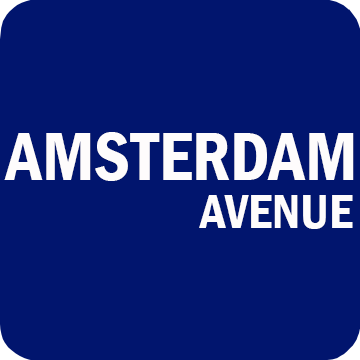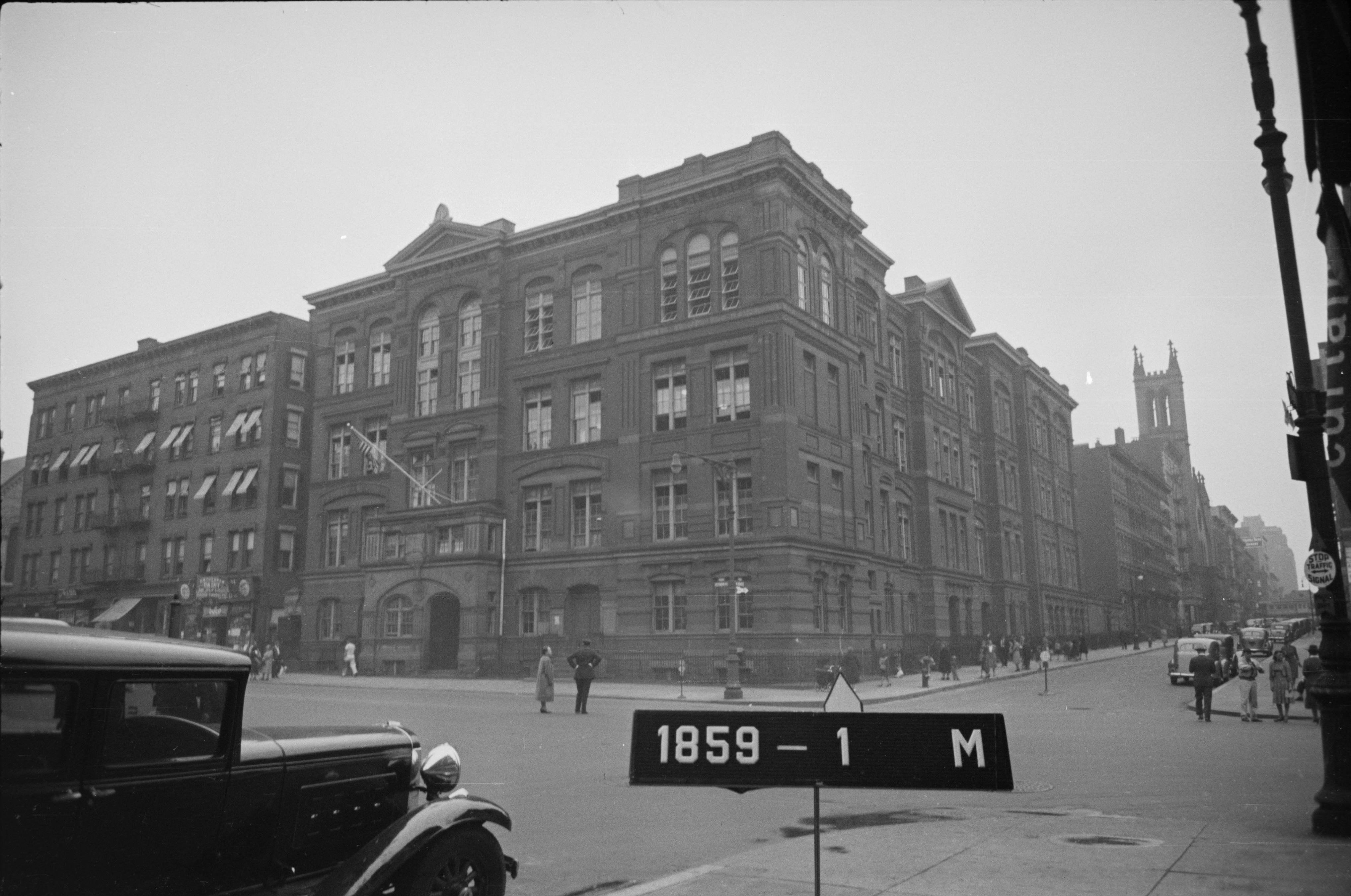
P.S. 54: 905 Amsterdam Ave.
by Tom Miller
On September 17, 1888, Board of Education President Simmons visited Grammar School No. 54 at Tenth Avenue (soon to be renamed Amsterdam Avenue) and 104th Street to “decide whether or not the schoolhouse is in an unsafe condition,” reported The New York Times. The article said, “The rear half of the old building has been torn down and a much larger and finer edifice is going up in its stead.” The foundations were deemed sound, and the construction continued.
The completed brick-and-stone school was a blend of neo-Grec and Renaissance Revival styles. The architect animated the façade with projecting sections that rose slightly higher than the intermediate portions.
The boys from Public School 54 were swept by a popular if irksome fad in 1901. On April 25, The New York Times reported, “Without any apparent reason for it, there has been an untimely and unwelcome outbreak of the torpedo habit among the small boys of the upper west side who live in Police Captain Schmittberg’s precinct.” “Torpedoes” were gumball-sized “impact firecrackers.” The fuse-less devices exploded when thrown onto a hard surface, like a sidewalk. “Armed with a pocket full of the ‘cannon’ torpedoes, which have a wonderful amount of noise concealed within their small compass, the lads make life wearisome for the nervous pedestrian, particularly those of the feminine gender.” The editor opined, “For general public comfort it would not be a bad idea for the teachers of Public School 54 to have their scholars forswear the torpedo habit until July, at least, when perforce the nuisance must be submitted to.”
P. S. 54 “is one of the first schools to have a school garden.”
Public School 54 was one of the first of the experimental “garden schools” or “children’s school farms” conceived by reformer Fannie Parsons. (She was appointed Director of School Farms and Playgrounds by the City of New York in 1906.) The Parks Department prepared the donated land, and civic groups provided financial support. Agnes C. Thompson wrote to the editor of The New York Times on June 25, 1908. She noted that P. S. 54 “is one of the first schools to have a school garden. There are others in the city, but this is one of the largest, and, many say, the most successful.” Divided into plots by classes, it was 80 feet long and four-and-a-half feet wide. The school children, of course, planted, nurtured, and harvested the vegetables.
On April 15, 1915, the decorative fountain and bronze sculpture Memory was unveiled in the newly named Straus Park. It was to honor the memories of Ida and Isidor Straus, who were lost in the R.M.S. Titanic sinking. A day earlier, The New York Times announced, “If the weather should prove inclement the exercises will take place in Public School 54 at the corner of Amsterdam Avenue and 104th Street.” (As it turned out, that was not necessary.)
By the World War I years, Public School 54 had at least one specialized teacher who instructed sight-impaired students. Their disability nearly caused a tragedy on January 10, 1918, when a fire broke out in a third-floor storeroom. The New-York Tribune reported that “1,680 pupils tramped from their classrooms out through the smoke-filled halls, emptying the entire building in less than two minutes. Eight were members of a class for blind children.” The article added, “While the fire was being extinguished the children, most of whom were without wraps, sought protection from the cold in the nearby Home for the Blind and the Presbyterian Old Ladies’ Home.”
One student, however, had become lost. The Sun reported, “a little blind girl who had been left behind when the other children marched through the smoke filled halls in perfect order, was rescued by a woman teacher.” In the meantime, mothers, “thoroughly alarmed by the rapidly spreading reports” of the fire, “thronged the streets, seeking their children.”
Five years later, the city staged a contest for the best essay on “Clean-Up and Paint-Up.” On May 5, 1923, The New York Times reported that the winner of the Sixth Grade entries was Jeannette Mason, “a blind girl in Public School 54.”
With seeming surprise, a journalist from The New York Times reported on the school’s valedictorian in 1927. He said that 14-year-old Dora Martin “has been a pupil who two years ago landed in America an immigrant, entirely ignorant of the English language.” Dora came from Costa Rica with her mother. During her two years here, she maintained a scholastic record of 93 percent. Now heading to Washington Irving High School, she told the reporter she “will take up commercial art.”
14-year-old Dora Martin “has been a pupil who two years ago landed in America an immigrant…”
By the post-World War II years, the vintage building was sorely outdated. In December 1947, Superintendent of Schools Dr. William Jansen admitted to the public that the plumbing facilities (i.e., the toilets) “were antiquated.” He was responding to a demand by the school’s Parents Association that the “matter of toilet facilities” was brought up to the “minimum requirements of the law,” as reported by The New York Times on December 12. Additionally, Dr. Jansen said that he had asked a superintendent to investigate the report “that some children in the school had contracted scabies as a result of conditions there.”
In February 1948, the father of a six-year-old pupil filed a lawsuit against the Board of Education and the Department of Health. It charged “that the insanitary condition of the seventy-year-old [sic] school constituted a health menace to 1,200 pupils.”
Instead of correcting the problem, the Board of Education chose to replace it. On December 23, 1948, the Board announced that four elementary schools and a junior high school would be constructed on Amsterdam Avenue. The New York Times reported that one of the new buildings would be Booker T. Washington Junior High School on Amsterdam Avenue and 108th Street. It would replace Public School 54, “which was erected in 1888 and is the oldest school in the neighborhood,” said the article.
In 1950, the student body of Public School 54 moved into the new building. The hulking structure at Amsterdam Avenue and 104th Street sat mute until 1960. Its site became the playground for the Bloomingdale School on 105th Street, completed in 1961.
Tom Miller is a social historian and blogger at daytoninmanhattan.blogspot.com


